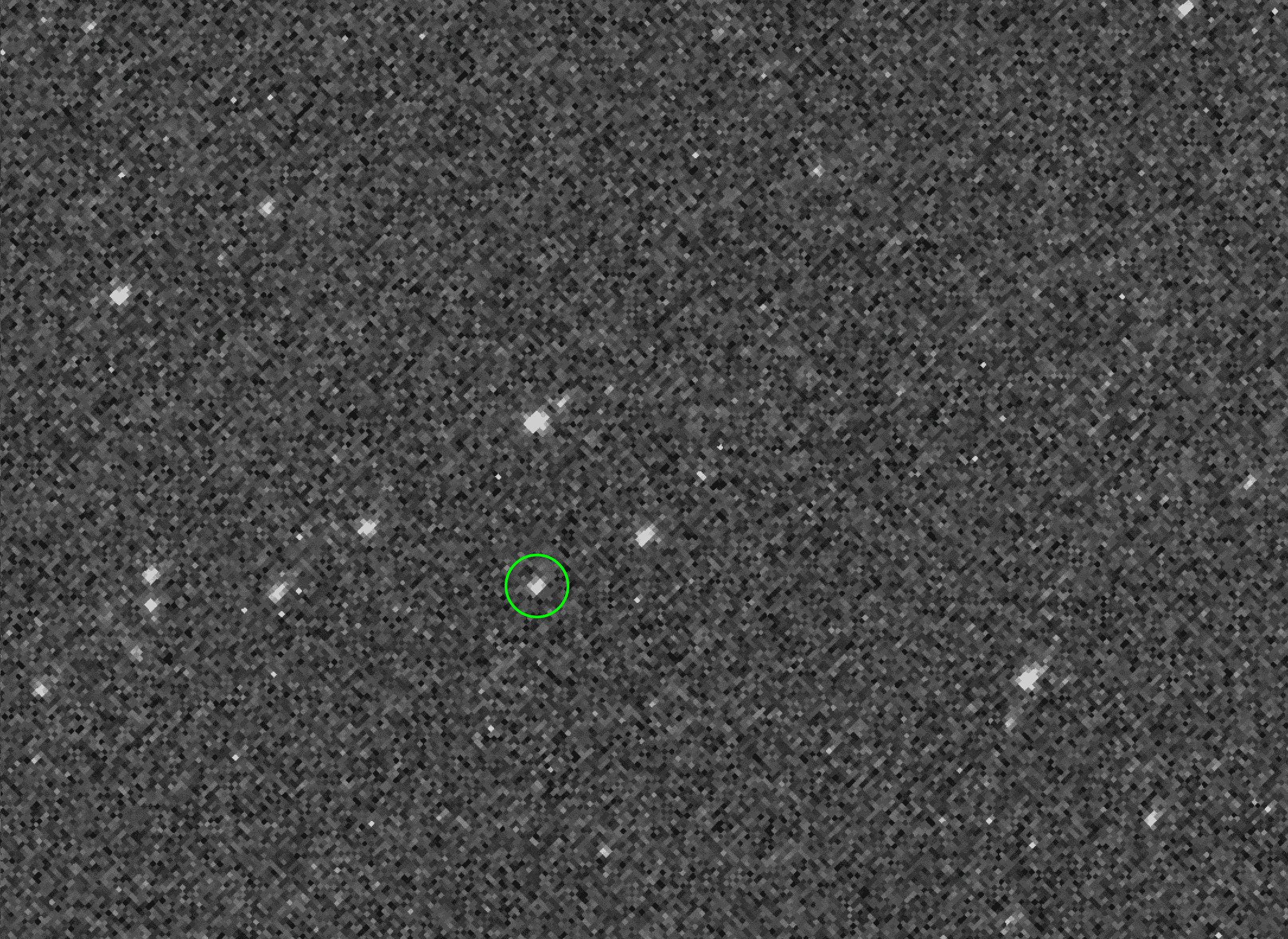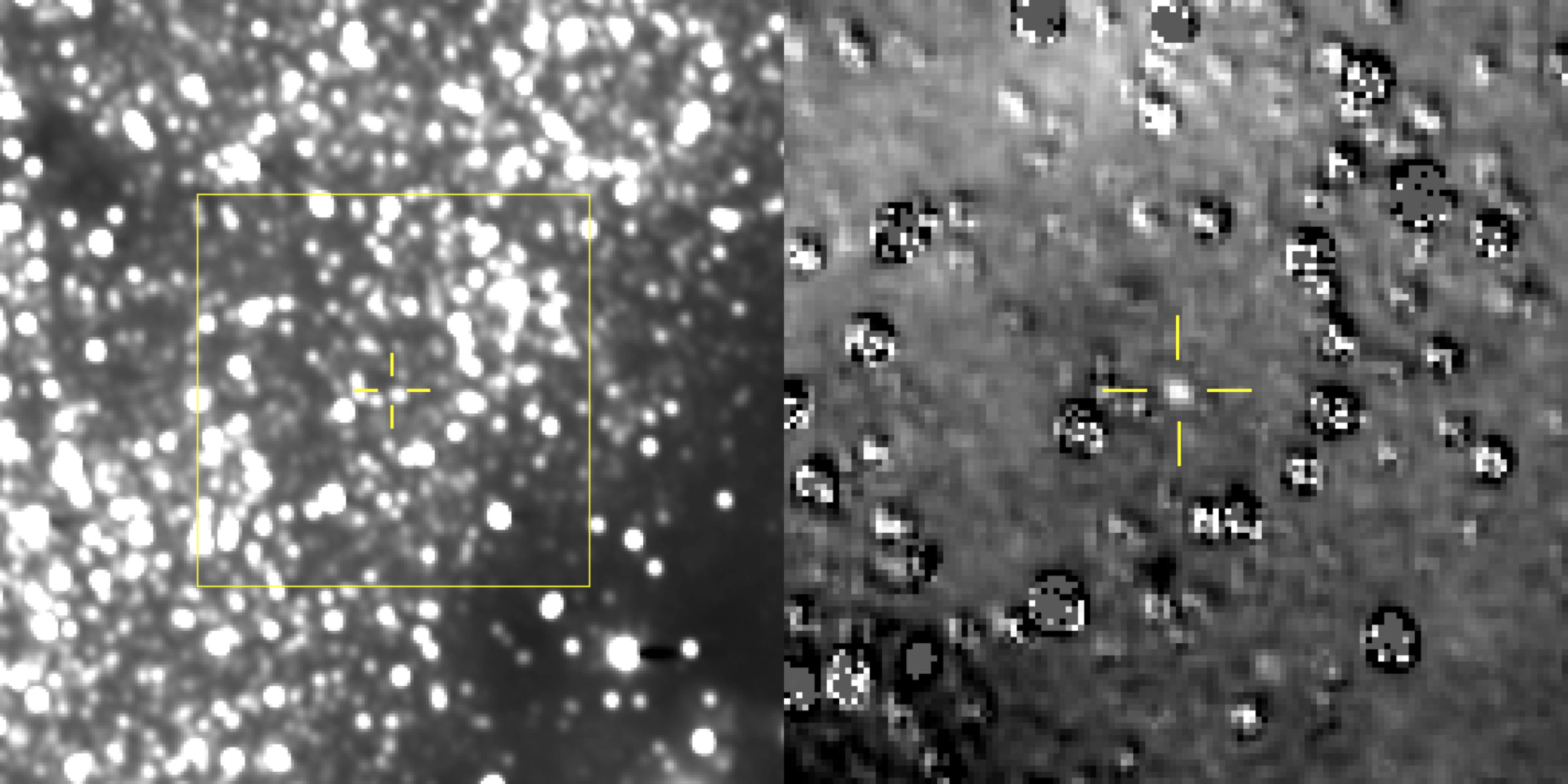Emily Lakdawalla • Aug 29, 2018
OSIRIS-REx and New Horizons catch first sight of their targets
Both OSIRIS-REx and New Horizons achieved first light on their still-distant targets this week. These views of tiny worlds aren't particularly impressive photographs, but each signals the transition from cruise phase to scientific exploration of objects that have, up to now, been mere points of light. Between now and the end of 2018, Bennu and 2014 MU69 will become places, worlds with geology and history recorded in their rocks.
Here is OSIRIS-REx's first sight of Bennu:

And here is New Horizons' first look at MU69:

When I last wrote about New Horizons in January, I described the LORRI software improvements that enabled the 30-second exposures that, in turn, enabled them to spot MU69 so far out. (Skip down to the header on "New Horizons' timeline for 2018..." to learn about that.) Congratulations to the team for making this difficult observation work!
Both of these images contain the same good news: Bennu and 2014 MU69 are quite close to the locations that we expected them to be. This is a vindication of the hard work of the astronomers who discovered and tracked the objects and predicted their future paths. It's also great news for the missions' navigators, who find themselves right on course toward their eventual destinations. Steady as she goes!
The next four months are going to be super for both New Horizons and OSIRIS-REx, especially December. Both mission teams will be getting their first science results from small worlds at the end of 2018.
Apart from their coincidence in timing, the two missions couldn't be much more different. New Horizons is much farther from its target -- in fact, it's about 100 times farther away from MU69 than OSIRIS-REx is from Bennu. New Horizons is also closing the distance at much higher speed. Consequently, MU69 is really just going to be a dot right up until the final moments before the New Year's Day flyby, and then New Horizons will zip on past; all the good science data (including the really good views of MU69 as a world) will come from a 48-hour period of observations, and it'll take weeks to return those best observations to Earth.
By contrast, OSIRIS-REx is closing the distance much more slowly, because unlike New Horizons, its goal is to brake to a relative speed of just about zero when it finally enters orbit at Bennu at the end of this year. It'll be the first space mission to orbit such a tiny world; Bennu is far smaller than Churyumov-Gerasimenko.
Beginning around October 15, we should be able to see the asteroid grow slowly in OSIRIS-REx's viewscreen. For more detail on what to expect from OSIRIS-REx, check out this June blog post.
The sportier Hayabusa2 will already have dropped several rovers on Ryugu by then. It's a small-body mission bonanza!
Support our core enterprises
Your support powers our mission to explore worlds, find life, and defend Earth. You make all the difference when you make a gift. Give today!
Donate

 Explore Worlds
Explore Worlds Find Life
Find Life Defend Earth
Defend Earth

